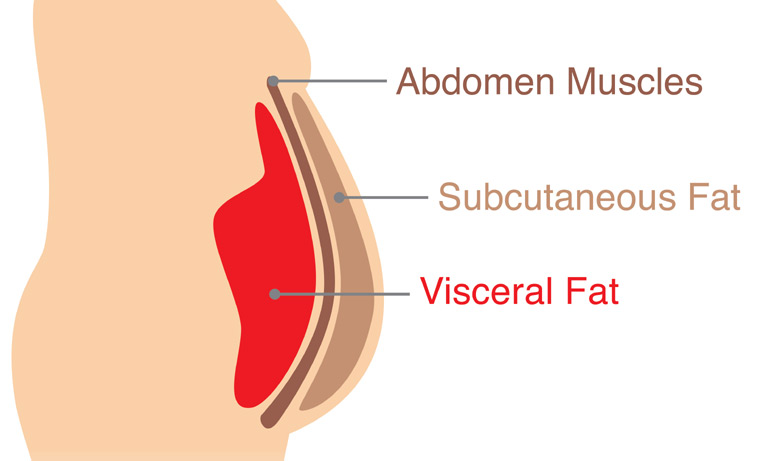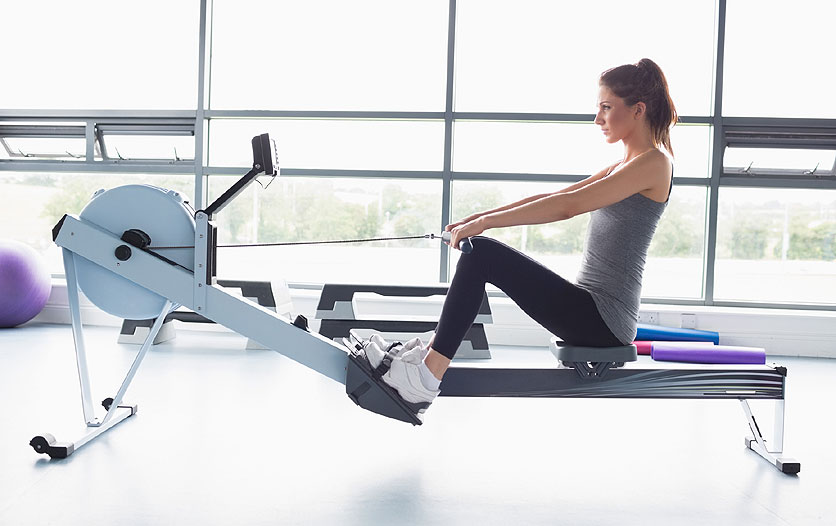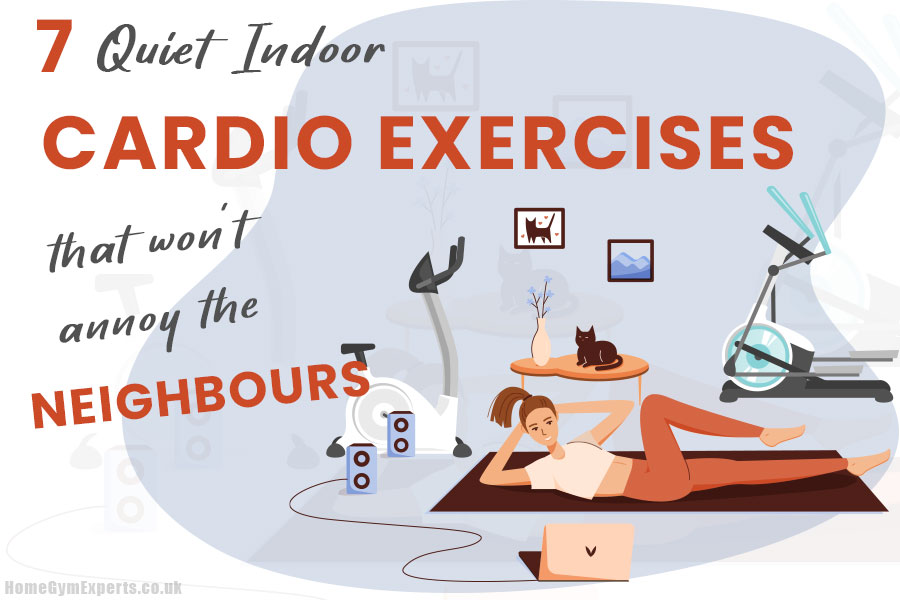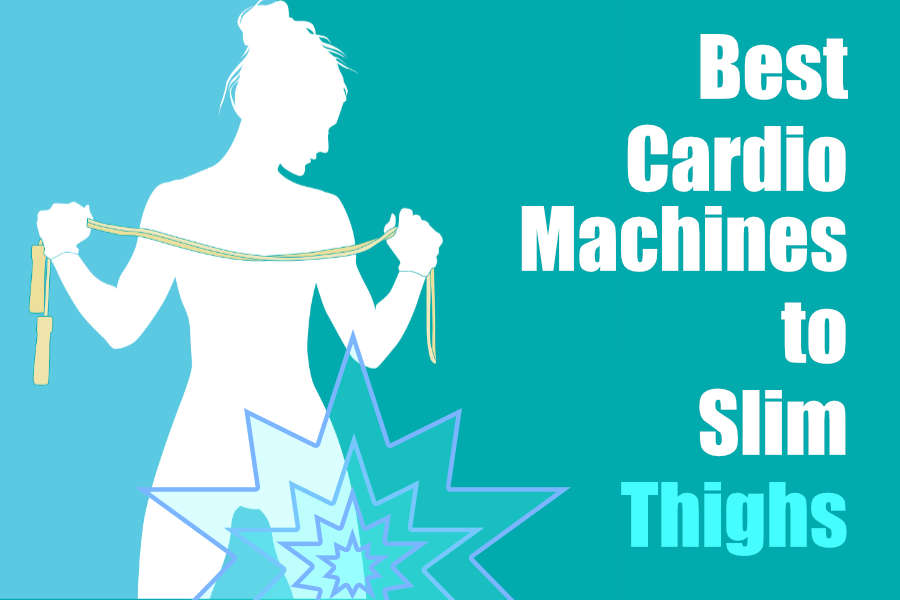Good body fat vs bad body fat: The difference between visceral and subcutaneous fat
We have all heard about nutritional ‘good fats’ and ‘bad fats’. Unsaturated, typically plant-based, fats are the ‘good fats’ that should be eaten in higher quantities than ‘bad’ saturated fats (although both are part of a healthy diet).

If you are like us, you think about this when you plan your diet and balance the Saturday morning bacon buttie with weekday peanut butter on toast. However, a lot of people stop thinking about fat once they have cleaned their plate or, if they think about body fat at all, they only think about it in aesthetic terms.
In this post, we are going to examine visceral fat and subcutaneous fat and how they affect your health.
Do I have visceral fat or subcutaneous fat?
Visceral fat and subcutaneous fat are both found around the middle of the body. If you pull up your shirt and feel your stomach, the soft fat that we all have around our middle – to varying degrees – is subcutaneous fat. Visceral fat is buried deeper, it is contained behind the abdominal muscles.
We have about 90% subcutaneous fat to 10% visceral fat. We cannot feel visceral fat with our hands and, given that it constitutes a much smaller percentage of our body composition, we cannot see much of it, but it is vital to know about visceral fat and to keep it under control.
How to tell if fat is visceral or subcutaneous
Visceral fat can be found in the arteries too, which connect to the heart. The tell-tale sign of carrying too much visceral fat is thickening around the waist. For men, alarm bells should go off if their waist measures more than 40 inches, for women they sound at 35 inches.
Visceral fat sits around several vital organs, including the liver, stomach and intestines, in a pouch known as the lesser omentum. There is also a larger omentum that wraps around the intestines.
Related Gym Guides
- Best Low-Impact Cardio Machine 2025
- How Much Should I Run on a Treadmill To Lose Weight?
- Do protein bars make you fat?
- How much weight should a beginner lift?
- Will Keto Help You Lose Fat AND Gain Muscle?
Health risks: is visceral fat dangerous
Controlling your levels of visceral fat is important because it actively harms your health. It produces a type of protein that increases insulin resistance and can lead to glucose intolerance and type 2 diabetes.
It is also a risk factor in a variety of life-threatening diseases, including cardiovascular disease – which can lead to heart attacks and strokes – and cancer. It creates an inflammatory response in the body that is known to aggravate existing conditions and creates the environment for more to develop.
For example, it worsens asthmatic symptoms and sleep apnoea; it also elevates blood pressure and increases HDL cholesterol. Visceral fat is associated with dementia too, increasing the risk of developing this debilitating disease threefold.
Why the heck do we have subcutaneous fat?
If you are feeling a bit panicked and are poking your belly again, we have some good news about subcutaneous fat. It acts as a kind of ‘anti-visceral’ protector in the body by making a hormone that helps to regulate fat and sugar processing, thus pushing back against the risk of developing type 2 diabetes.
It releases the hormone leptin, which controls your hunger levels and stimulates the burning of stored fat (yes, fat burns fat!). Subcutaneous fat offers anti-inflammatory protection too, helping to control the harmful effects of visceral fat.
However, the benefits of subcutaneous fat are only realised at a healthy body weight, this is not a case of more = more benefits.

How much subcutaneous fat should i have?
A healthy body composition of roughly 90% subcutaneous fat to 10% visceral fat therefore counterbalances the negative effects of the latter. This is why it is important to think about more than just your bodyweight when considering bodyfat.
As we have already mentioned, a thicker middle can signal a dangerous accumulation, but visceral fat is not guaranteed to show in this way. Our genetics, gender and hormone levels all influence how our body stores fat.
Naturally thin people can sleepwalk into high visceral fat levels if their bodies do not store much subcutaneous fat – the more visible fat. People who eat whatever they want, never exercise and maintain a slim figure are often seen as the lucky ones – but they can be storing up a health timebomb.
How to decrease subcutaneous fat
It is important to pay attention to your bodyfat composition and take active steps to protect your health. From a diet perspective, there is no magic food you need to consume, so if you are already eating in moderation and getting all your nutrients you are doing enough.
There is some evidence that alcohol encourages the formation of visceral fat, although it is not fully known whether this is down to the alcohol itself or just a result of taking in more calories.
Exercises to target subcutaneous fat
Exercise plays a comparatively greater role in controlling visceral fat. Both cardio and strength training burn internal visceral fat. Even people who begin training programmes and do not seem to be losing weight can see a change in their waistline that signals a reduction in this harmful fat.
As we have mentioned before, it is not possible to target exercise to reduce fat in one area, so exercises like sit-ups will not burn visceral fat any more than other exercises.
References & Further Reading
- New to all things cardio? Check out the NHS exercise guide and start off the right way.
- Pub Med: Study of subcutaneous fat
- Christie Aschwanden – Most effective cardio workouts, according to science
- NCBI – The Role of Exercise and Physical Activity in Weight Loss and Maintenance
- Matthew A. Nystoriak* and Aruni Bhatnagar – Cardiovascular Effects and Benefits of Exercise
- Aaron Kandola – What are the best exercises for weight loss?









